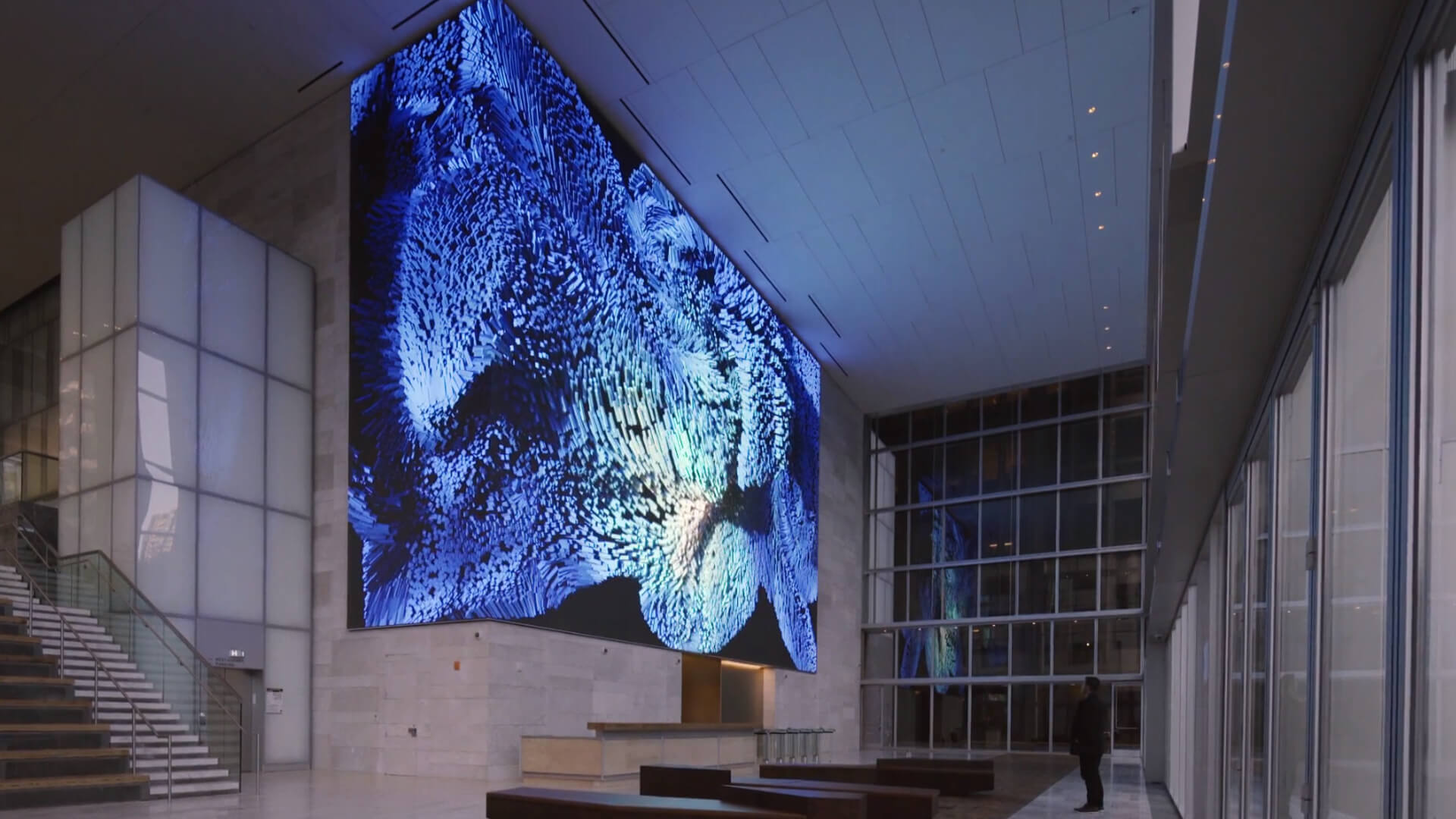Featured Image Credit: Refik Anadol, Virtual Depictions: San Francisco
Refik Anadol Studio finds its creative inspiration at the intersection between humanity and machine. Whilst many designers and artists alike have forged remarkable statement pieces and entire exhibitions around this cornerstone, Refik Anadol has moved a step beyond, looking to innovate, challenge and drive the future of art and expression. We spoke to the data artist himself to find out more about his work, creative ambition and achievements.
There are those that scoff at the idea that machines can create art – that their logical and mathematical foundations can produce something that, to the human eye, looks beautiful, memorable or poignant. Of course, there are others who have seen advancements in machine learning as an unfettered opportunity to explore new horizons and push the boundaries of ‘art’. After all, we’ve simply moved beyond the times that art was one person in one space with a paintbrush, visualising what they were seeing or experiencing. Art has, in almost every way, evolved and become something very different indeed.
This really is the foundation for Anadol’s continued efforts: a need to visualise and explore the unexplored and never before visualised. To harness today’s technology to create spectacles that ask very relevant questions about the nature of humanity, the nature of technology and how the two collide, combine, entangle and evolve, together. “In taking the data that flows around us as the primary material and the neural network of a computerised mind as a collaborator, offering radical visualizations of our digitized memories and expanding the possibilities of architecture, narrative, and the body in motion. The site-specific parametric data sculptures, live audio/visual performances, and immersive installations offer a dramatic rethinking of the physical world, our relationship to time and space, and the creative potential of machines.” Throughout it all, omnipresent, Anadol always captures a sense of wonder – a childish delight of the mundane made interesting, unique and original through technology. This is art and architecture blown wide open, united and holistic, utilising elements that have never before been utilised.
It’s no wonder that Refik Anadol Studio has amassed a host of awards and accolades over the years. Combining this innovative approach and harnessing the collective expertise of prominent computer scientists, software developers, architects, engineers and designers, Andaol’s visions have become realised, resplendent in their originality. Through their pioneering work, the studio has partnered with teams at Microsoft, Google (Artist and Machine Intelligence), Nvidia, JPL/NASA, Intel, IBM, Siemens and Epson, to apply the latest, cutting-edge science and technologies to his work, as Anadol explains in more detail. “By proposing the possibility of “post-digital architecture,” the studio invites their audience to imagine alternative realities by re-defining the functionalities of both interior and exterior architectural elements. Refik Anadol Studio tackles this by not simply integrating media into built forms, but by translating the logic of a new media technology into spatial design.”
Anadol continues, taking a moment to summarise the simple appeal of his studio’s work. “Our studio’s site-specific parametric data sculptures, live audio/visual performances, and immersive installations take many virtual and physical forms. Entire buildings come to life, floors, walls, and ceilings disappear into infinity, breath-taking aesthetics take shape from large swaths of data, and what was once invisible to the human eye becomes visible, offering the audience a new perspective on, and narrative of their worlds.
“The primary thread that runs throughout our ground-breaking visualizations of the unseen world is data; for WDCH Dreams, Refik Anadol Studio accessed 100 years of the Los Angeles Philharmonic’s digital archives; for Oakland’s Sense of Place, real-time environmental data informs the work; and for Charlotte Airport’s Interconnected, we utilize real-time airport statistics.” What’s clear is that inspiration can be found anywhere.
Finally, when it comes to the future of Refik Anadol Studio, Anadol concludes by discussing his plans for future projects, new ventures and imminent installations. “Our plans for 2019 are to continue exploring the foundation of an emerging field known as Synesthetic Architecture – a discipline which implies that the practice of architecture is based on a new understanding of dimensionality. With the advent of Machine Learning we are asked to broaden our conception of space to include 3D spaces, time-based “4D” media interactions and experiences of high dimensionality expressed through analytic and generative machine learning systems.
The foundation of this discipline is based on three types of spaces that architects may design for in contemporary architecture — material, simulated, and latent — the space in the “mind” of a machine. Synesthetic architecture therefore suggests that architects may enfold Machine Learning into building forms, not just creating but also re-defining space through mixed media and interactive robotics.
Without a doubt the age of machine intelligence will make our computers, our buildings, and our cities more responsive and brain-like. So rather than suggesting that Machine Learning might supplant architects altogether, how we can augment and expand the possibilities for architecture itself, how can we use these tools as collaborator?”






























